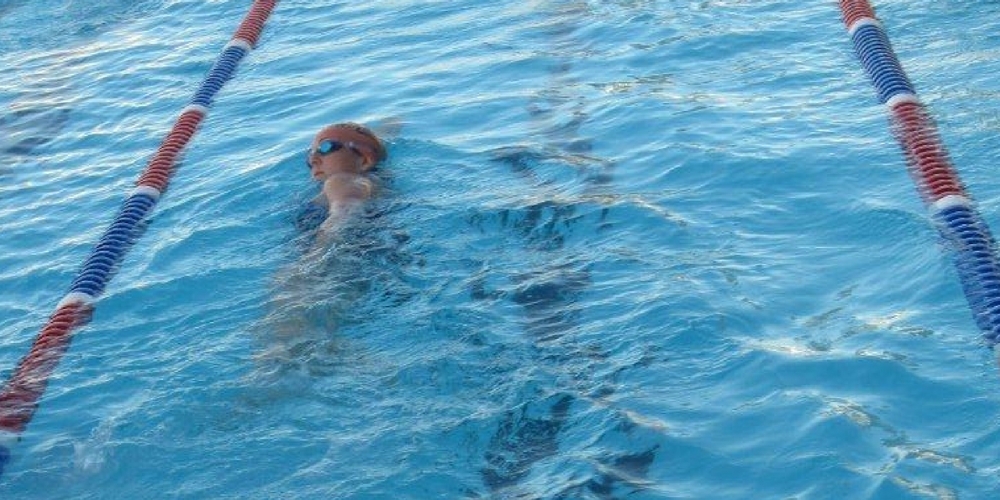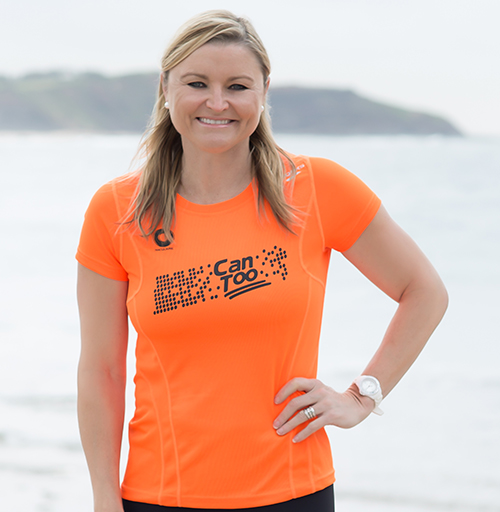
Can Too Swim Coach Gary Emmerton shares his wisdom on how to master ocean swimming.
Once you learn how to perfect your timing in swimming the two most important fundamentals, balance and breathing, will fall into place. When you get your timing right your centre of gravity shifts to the top of your neck and shoulders, your hips rise up to the surface, your body straightens, and oddly enough your shoulders start to turn your head to breathe - instead of your head lifting and turning your shoulders.
Your mantra for timing when ocean swimming is rhythm and swing. Good timing = body balance = less energy spent = good swim pace.
Timing is also about consistency. If you can maintain your mantra of rhythm and swing for 70 – 80% of the time, you’ll be a winning ocean swimmer!
Remember these tips for perfect timing next time you’re in the pool or ocean.
Timing / Centre of Balance
- It’s important for you to keep a streamlined position at all times.
- Your leading hand should only start to pull through when your trailing hand is about to enter the water directly in front of your shoulder. To some this may seem like a catch-up drill.
Hip and Body Rotation
- This is the power phase of your stroke.
- As your leading left hand enters the water, push it directly forward with force as far as you can while pulling the right arm through the water at the same time.
- You’ll naturally find your right shoulder will turn and pop out of the water, and your right hip will turn naturally upwards while your left hip natural turns downwards. Once you’ve completed this step relax for a second and concentrate on the next forward arm set-up.
Forward Arm Set Up
- When your left or right arm and hand is extended, they will naturally start to fall and start moving backwards in your direction. This is the Forward Arm Setup.
- Take this time have a quick look at your arm and hand to see if they are set up correctly: hand below wrist / wrist below elbow.
Head Position
- Your head should be in line with your spine, with the crown of your head at the water line and your eyes looking slightly forward and down.
- If you have the correct head tilt you’ll always be able to see your forward hand for correcting set up.
Lead Hand
- Your lead hand should always enter the water in front of your shoulder and extend directly forward.
- Your arm or hand must stay in this line and never cross inwards towards your head.
Pull Through and Finish Off Your Stroke
- Once your extended arm is set up and the trailing arm is about to enter the water, pull through directly back towards your hips. Do not cross over your body. Imagine there’s a line down the centre of your chest and never cross it. If you do, your hips and shoulders will over-rotate and your head will lift up, your legs will sink and come apart, and your knees will bend.
- Don’t rush the power phase. If you rush it you’ll end up cutting your stroke in half by puling your arm out under your armpit.
- Finish off your stroke just past your hip. This will encourage your rotation, saving energy, and will not interrupt your rhythm and swing.
Pulling arm angle = 120 degrees
Turning Your Head
- Once your extended arm is set up, exhale during the power phase.
- When you are ready to breathe turn your head as your shoulder is turning – this is your rhythm & swing.
Breathing
- While we’re all different, to keep your rhythm and swing I’d suggest you breath every 3rd stroke when swimming in the ocean. This will ensure you don’t get into oxygen debt. Make sure you expel at least 80% of your air into the water. Never hold your breath, constantly breathe out. As soon as you open your mouth remember to breathe – your diaphragm will suck in the exact required volume of air. You don’t have to worry about sucking in extra air.
- Open your mouth and concentrate on your rhythm and swing and periodically check your extended arm set-up.
- Keep your head low in the water and try and breathe while keeping one eye in the water and the other just out of it. If your power phase is timed correctly and your head is low, the top of your head will create a bow wave in front of your mouth, which becomes an open space that you can breathe from.
Kicking
- Again, we’re all different, so do whatever is comfortable for you. If a rhythmic kick is comfortable for you – do it. However, don’t push those big thigh muscles too hard or they’ll burn your oxygen. Just a gentle flutter will be sufficient for most Can Too swimmers.
- For the more advanced swimmers I’d suggest a two beat kick, making sure the right leg fires just at the same time as the right arm power phase commences. Contrary to everyone’s thinking, kick upward with your left foot as the right fires down. I know it sounds a little weird but mastering this kick will make you more efficient ocean swimmer.
Entering the Water
- Once again, timing and rhythm are important. Don’t get caught up in the rat race at the start. Pace yourself. On race day make sure you stay under the shade until 15 minutes before your starting wave.
- Run into the water up to your knees. Once the water depth passes your knees, start to duck-dive until the water is just below your hip-line, then start swimming.
- If you need to dive under a wave, dive early and stay under for 3 seconds kicking in a streamlined position, then surface. If you come up too early the water will drag you back towards the beach. If you can stand, duck-dive again and stay in the break. If not then start swimming.
- On your way out through the break, if you’re swimming and a wave pitches up in front of you, lead through the wave with your forward arm extended and your head down. Try and keep kicking. Once the wave passes, pop out the back of the wave then have a quick look forward and keep swimming.
- If a wave breaks in front of you in deep water, and you don’t have time to dive under it, stay as straight and rigid as you can while the white water passes over you. Once through the wave get back into your timing and rhythm.
Timing Through the Choppy Waves
- When the ocean gets choppy make sure you’re forcing your entry hand. Don’t worry if the wave or chop knocks your arm back or cuts your stroke short, just keep punching forward, thinking about your rhythm and swing. There is nothing you can do about it, be like Dory and “just keep swimming”.
Sighting
- Once you’re into your rhythm and swing start to periodically sight. I suggest you sight every 15 strokes.
- If the ocean is choppy then sight two strokes in a row after every 15 strokes to keep on course.
Heading In To Shore
- Separate to catching waves, as your come into the shore break you’ll feel the water sucking back or across your body. When you do feel this, increase your stroke rate, and really punch forward with your lead arm.
- During the power phase try and dig a little deeper towards the bottom of the ocean. From the time you first feel the water sucking against your body continue digging deeper for 6 – 8 strokes.
- You may need to do this 3 or 4 times as you’re about to reach the shore.
Standing Up When You Finish
- Remember not to stand up until your hand touches the sand while swimming.
- Always look behind you just in case there’s a small wave you can jump on.
- Don’t rush it! You’ve finished the swim, give yourself 10 seconds or so to let your blood pressure even out through your body. When you’re calm and balanced on your feet, then gently jog up the beach.
Wrap–Up
- The Can Too goal swim on Sunday 7 April and the Bondi Blue Water Challenge on Sunday 28 April, a Can Too reunion swim, will be the perfect opportunities to demonstrate the ocean swim skills you’ve learnt with Can Too. Post-race remember to hug your fellow Can Tooers, rehydrate and tell them how good you were.
- Try to remove that smile from your face after a successful ocean swim. I bet you $100 you can’t!









